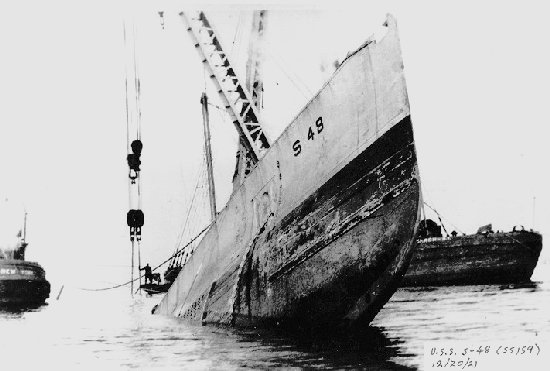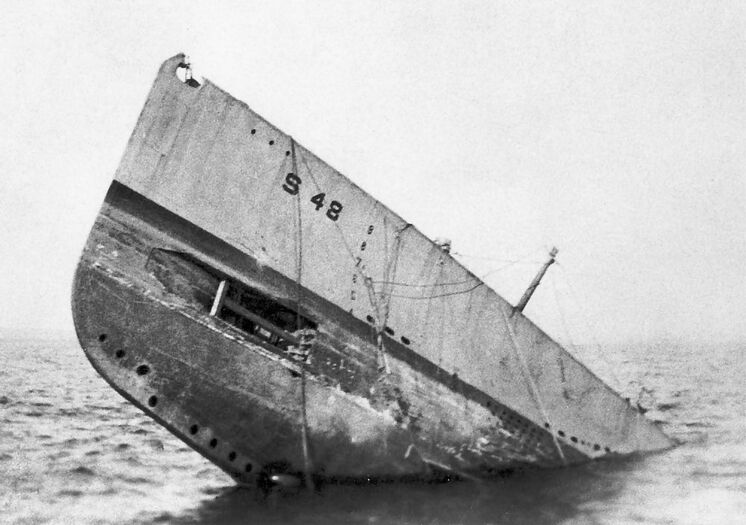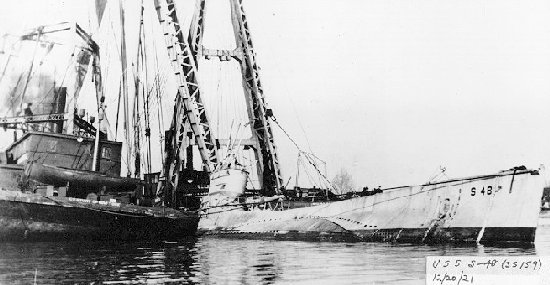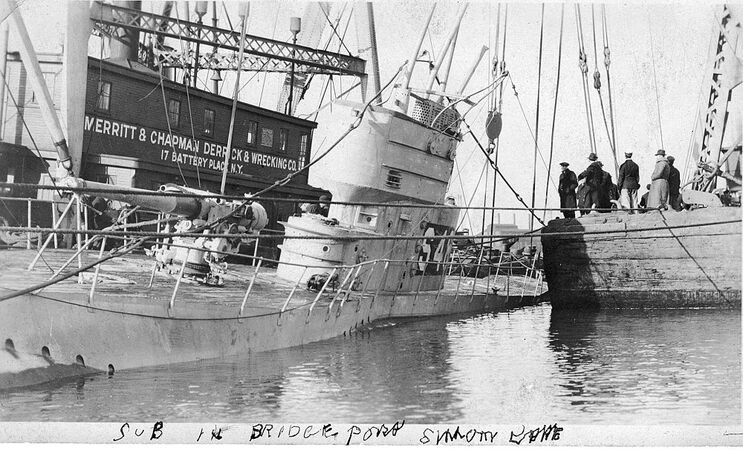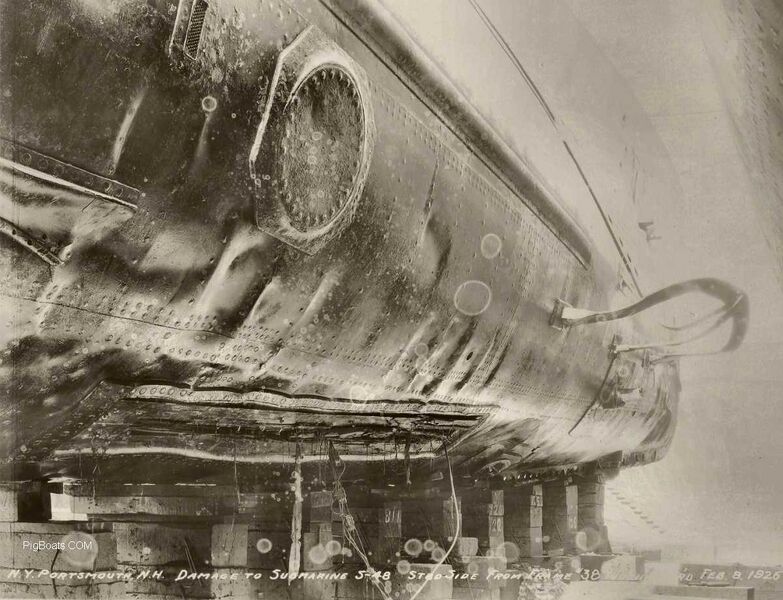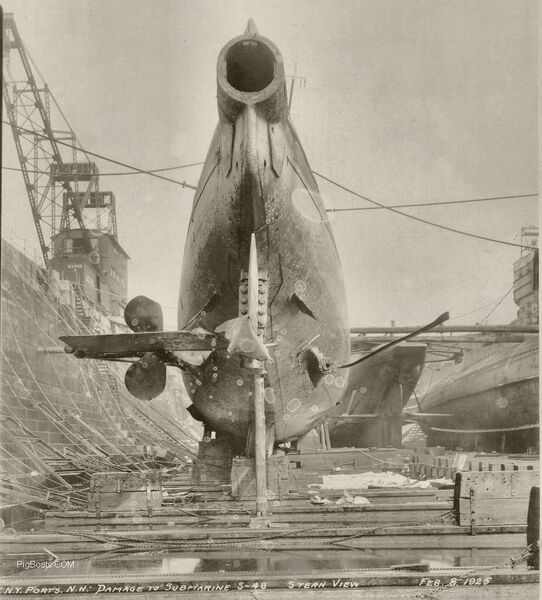S-48: Difference between revisions
Pbcjohnston (talk | contribs) Added photos and captions |
Pbcjohnston (talk | contribs) Added photos and captions |
||
| Line 69: | Line 69: | ||
</center> | </center> | ||
<div style="text-align: justify;"><span style="color:#00008B">Simon Lake promptly hired the Merritt & Chapman company of New York for the salvage effort. Most of the boat was still watertight so the evolution was relatively simple as salvage jobs go. These two pictures were taken during the salvage operation. A floating derrick was used to raise the stern so that the water could be pumped out. The operation was complete just 13 days after the sinking and S-48 was towed back to the Lake yard in Bridgeport for repairs. A subsequent investigation forced Simon Lake to sheepishly admit that one of his workers had left a manhole cover off an aft ballast tank. When the boat submerged the open cover allowed water to flood the after part of the boat. They got very lucky. If the dive had occurred in deeper water the ending could have been disastrous. S-48 was eventually repaired and she was commissioned into the Navy on October 14, 1922. | <div style="text-align: justify;"><span style="color:#00008B">Simon Lake promptly hired the Merritt & Chapman company of New York for the salvage effort. Most of the boat was still watertight so the evolution was relatively simple as salvage jobs go. These two pictures were taken during the salvage operation. A floating derrick was used to raise the stern so that the water could be pumped out. The operation was complete just 13 days after the sinking and S-48 was towed back to the Lake yard in Bridgeport for repairs. A subsequent investigation forced Simon Lake to sheepishly admit that one of his workers had left a manhole cover off an aft ballast tank. When the boat submerged the open cover allowed water to flood the after part of the boat. They got very lucky. If the dive had occurred in deeper water the ending could have been disastrous. S-48 was eventually repaired and she was commissioned into the Navy on October 14, 1922. | ||
[[File:Red bar sub new.jpg]] | |||
[[File:S-48 portsmouth.jpg|left|500px]] | |||
<div style="text-align: justify;"><span style="color:#00008B">S-48 and her crew pierside at an unknown location, summer 1923. The crew seems pretty relaxed. Laundry is hanging from the radio aerial wires on the right. | |||
<small>Photo in the private collection of Ric Hedman.</small> | |||
[[File:Red bar sub new.jpg]] | |||
[[File:S-48 grounded 1.jpg|left|500px]] | |||
<div style="text-align: justify;"><span style="color:#00008B">S-48 was a hard luck boat. On the evening of January 29, 1926 she was on her way back to Portsmouth when she ran aground in a snowstorm on Jaffrey Point at the southern mouth of the Piscataqua River. She freed herself after a bit, but in the worsening weather conditions she grounded again at Little Harbor. This time she was stuck hard and the poor weather was causing her to roll excessively on the beach. Her battery was flooding and chlorine gas forced the crew to abandon ship. The entire crew survived, but several men had to be treated for gas exposure. This photo shows her on the beach at Little Harbor on January 30, 1926. | |||
<small>Photo in the private collection of Ric Hedman.</small> | |||
[[File:Red bar sub new.jpg]] | |||
[[File:S-48 grounded 2.jpg|left|500px]] | |||
<div style="text-align: justify;"><span style="color:#00008B">A closeup of S-48's conning tower fairwater, heeled far over to starboard, grounded at Little Harbor, New Hampshire, January 30, 1926. The bridge fairwater juts out over the conning tower itself, three of the seven small round deadlight windows in the conning tower can be seen just below the bridge overhang. Just to the left of the "S 48" are three round watertight ammunition storage lockers for the 4"/50 caliber deck gun. The radio mast near the top of the photo appears to be bent. | |||
<small>Photo in the private collection of Ric Hedman.</small> | |||
[[File:Red bar sub new.jpg]] | |||
[[File:S-48 grounded 3.jpg|left|500px]] | |||
<div style="text-align: justify;"><span style="color:#00008B">Salvage operations on the stranded S-48 began immediately. She was refloated on February 7th and was towed to the Portsmouth Navy Yard just a few miles away. This photo shows a wrecking derrick helping to refloat her and the Navy harbor tug USS Penacook (YTM-6). | |||
<small>U.S. Navy photo.</small> | |||
[[File:Red bar sub new.jpg]] | |||
[[File:S-48 grounded 5.jpg|left|500px]] | |||
<div style="text-align: justify;"><span style="color:#00008B">Penacook and another tug towing the S-48 up the Piscataqua River near the Portsmouth Navy Yard, February 7, 1926. They are just passing the Portsmouth Naval Prison at the east end of the yard. The sub is sitting pretty low in the water, as she has not been completely dewatered yet. | |||
<small>U.S. Navy photo.</small> | |||
[[File:Red bar sub new.jpg]] | |||
[[File:S-48 grounded 4.jpg|left|500px]] | |||
<div style="text-align: justify;"><span style="color:#00008B">S-48 and Penacook very near the end of the tow to the Portsmouth yard, preparing to hand off the submarine to the drydock, February 7, 1926 | |||
<small>U.S. Navy photo.</small> | |||
[[File:Red bar sub new.jpg]] | |||
<center> | |||
<gallery mode="packed" widths="500px" heights="400px"> | |||
File:S-48 grounded dd 1.jpg | |||
File:S-48 grounded dd 2.jpg | |||
</gallery> | |||
</center> | |||
<div style="text-align: justify;"><span style="color:#00008B">Two views of the S-48 in drydock at the Portsmouth Navy Yard, Kittery, ME. on February 8, 1926. Hull plates along her bottom have been stoved in, her starboard bow diving plane has been ripped off and the guard bent up, and her starboard side propeller, shaft and stern diving plane have been destroyed. In the left photo the large round plate is the transducer for the Fessenden Oscillator, an early form of sonar. The damaged strip underneath it is the former location for the MV series passive sonar. The oblong housing and transducers have been completely sheared off by the grounding, leaving dangling wires. In the photo on the right, the stern torpedo tube can be seen jutting through the stern "chisel". Compare this configuration to the one for the [[S-11|'''S-11 (SS-116)''']] and the differences in the stern tube design can be clearly seen. | |||
<small>U.S. Navy photos.</small> | |||
[[File:Red bar sub new.jpg]] | [[File:Red bar sub new.jpg]] | ||
Revision as of 15:56, 22 August 2023
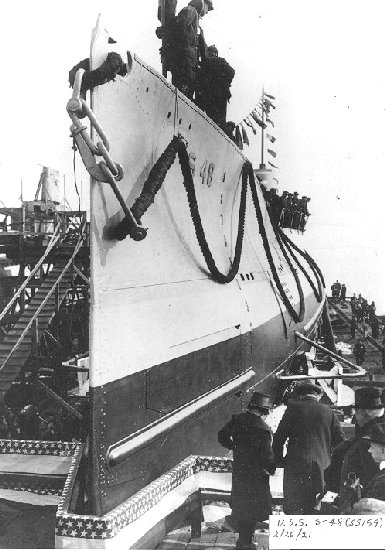
U.S. Navy photo NH 108448 courtesy of the NHHC.
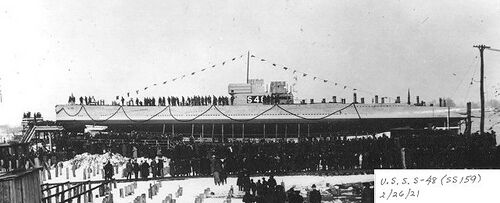
U.S. Navy photo NH 108453 via the NHHC.

There is another woman in tribal dress on the left and she is wearing a number of beaded necklaces. On her dress on the lower front is a swastika. It has nothing to do with the Nazi party at this time. It is an ancient symbol that has history going back thousands of years and has various meanings depending on the region of the world it appears. The word swastika derives from the Sanskrit "svastika" meaning "lucky or auspicious object". it is commonly used as a religious symbol in Hinduism and Buddhism. It was considered as a luck symbol in many cultures.
Photo in the private collection of Ric Hedman.
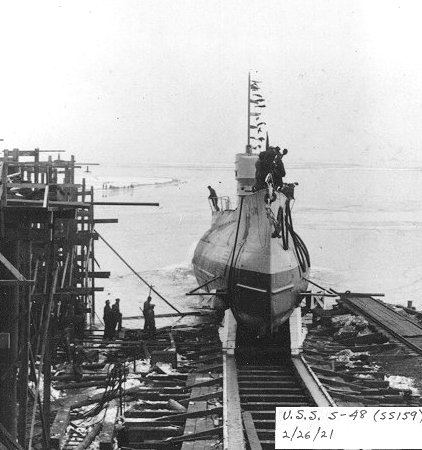
U.S. Navy photo NH 108451 courtesy of the NHHC.
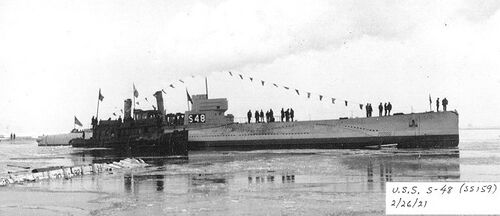
U.S. Navy photo NH 108449 courtesy of the NHHC.
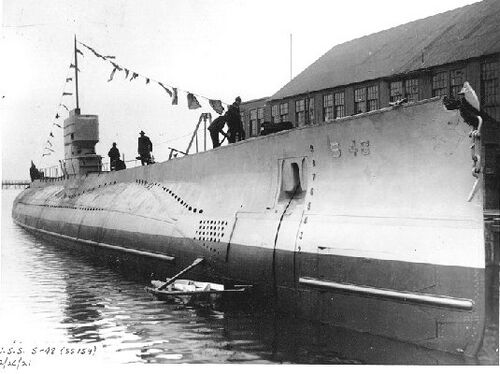
U.S. Navy photo NH 108450 courtesy of the NHHC.
-
U.S. Navy photo.
-
Photo courtesy of T. Gray Curtis.
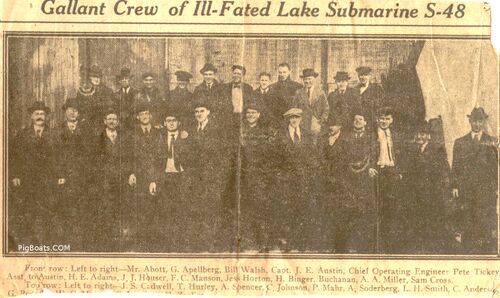
Photo in the private collection of Ric Hedman.
-
U.S. Navy photo.
-
Photo in the private collection of Ric Hedman.
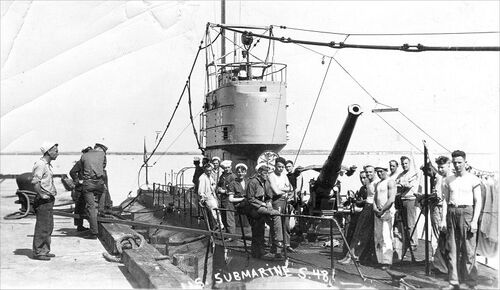
Photo in the private collection of Ric Hedman.
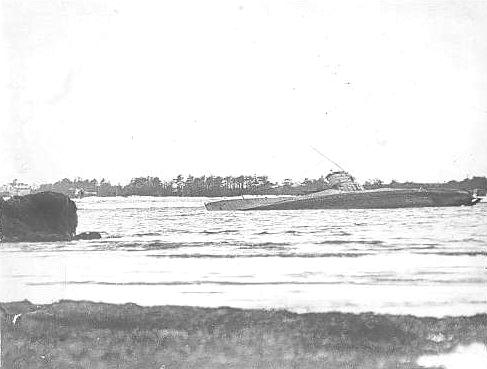
Photo in the private collection of Ric Hedman.
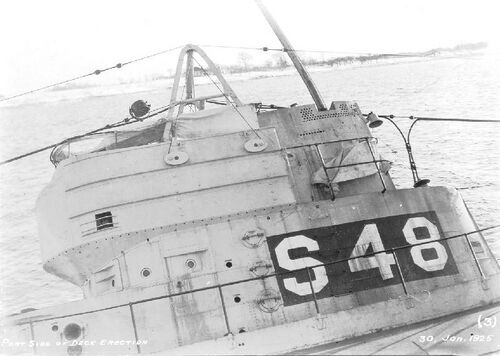
Photo in the private collection of Ric Hedman.
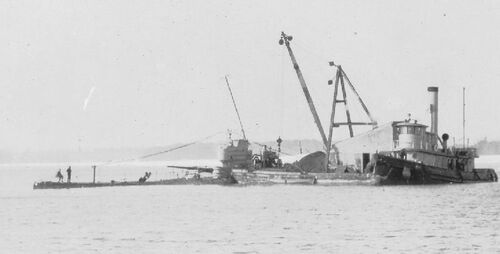
U.S. Navy photo.
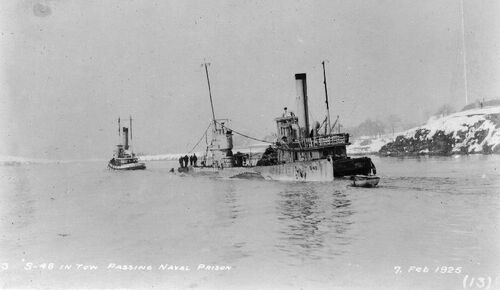
U.S. Navy photo.
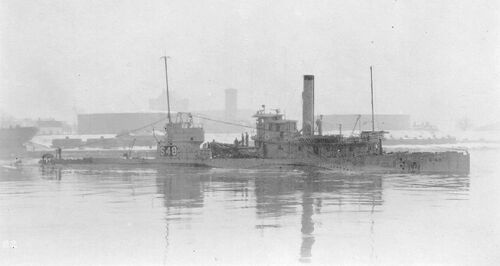
U.S. Navy photo.
U.S. Navy photos.
Page created by:
Ric Hedman & David Johnston
1999 - 2023 - PigBoats.COM©
Mountlake Terrace, WA, Norfolk, VA
webmaster at pigboats dot com

